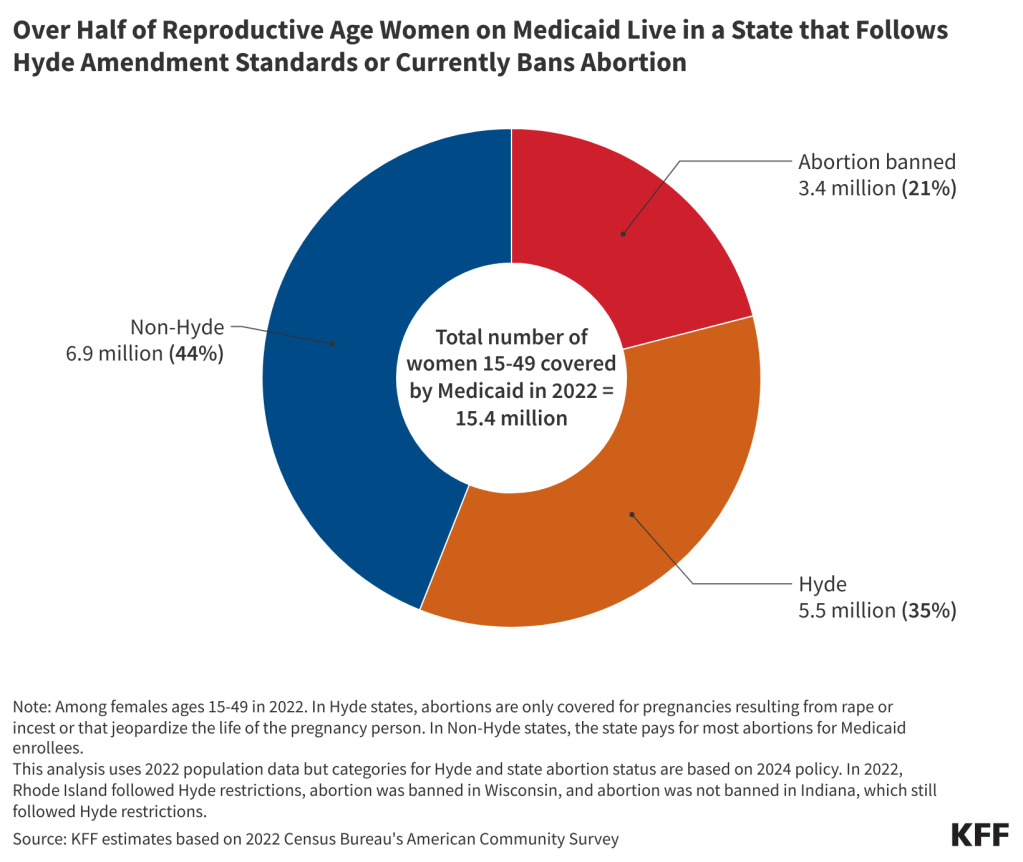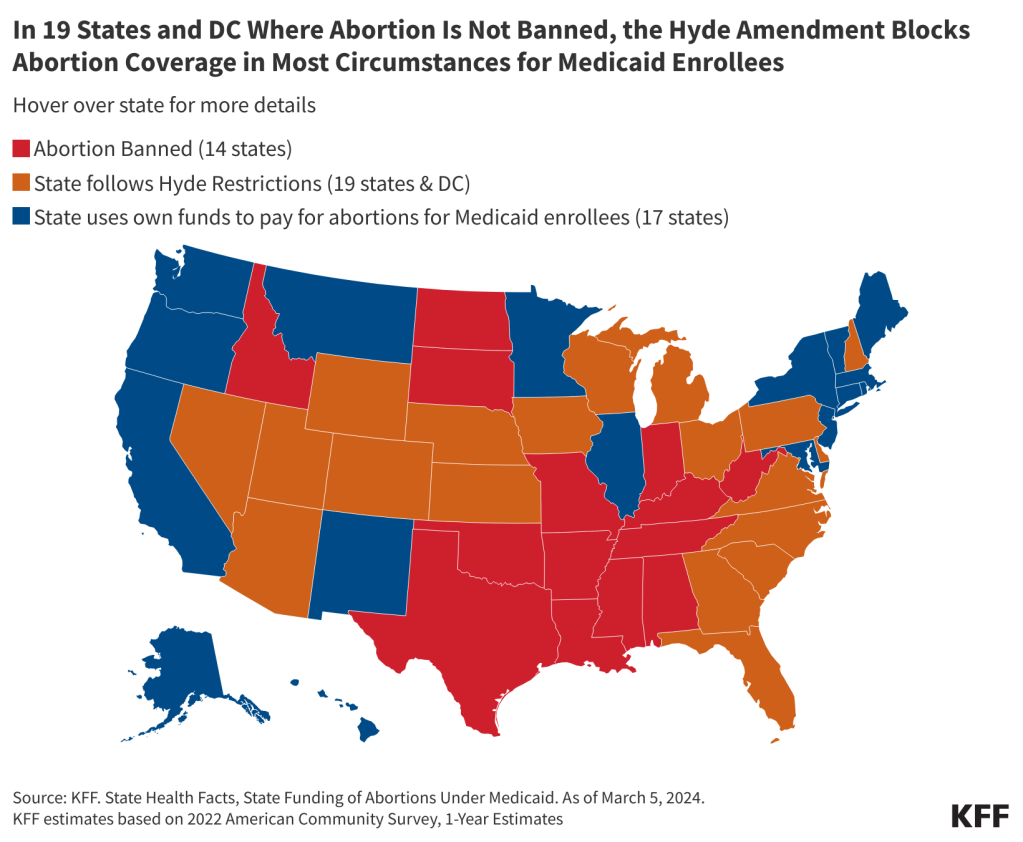
The independent source for health policy research, polling, and news.
KFF Examines the Hyde Amendment and its Impact in States Without Abortion Bans
KFF takes a new look at the continued impact of the Hyde Amendment, the federal ban on payment for abortion services, in the wake of the Supreme Court’s Dobbs decision. At a moment when all eyes are on states that have banned abortion, the Hyde Amendment remains a barrier to abortion care for people with low incomes in states where abortion is legal but the state restricts Medicaid coverage to the narrow exceptions allowed under Hyde.
Today, the policy limits abortion coverage in 19 states and the District of Columbia where abortion isn’t banned. The policy potentially affects 5.5 million women ages 15 to 49 who reside in those states and are covered by Medicaid.

Since 1977, the Hyde Amendment has banned the use of federal funds for abortion, allowing exceptions to pay for terminating pregnancies that endanger the life of the pregnant person or that result from rape or incest. This policy has limited abortion coverage for millions of pregnant people on Medicaid, as well others who rely on federal programs such as Medicare, TRICARE, and the federal Employee Health Benefit Program for their coverage.
This longstanding federal funding ban has had a disproportionate effect on women with low incomes and women of color who are covered by Medicaid at higher rates and are more likely to seek abortion care because of persistent systemic barriers to care and contraceptive access. Some states choose to pay for abortions for their Medicaid enrollees in other instances but use their own state revenues, not federal funds, to cover the service.

For more information about the federal programs affected by the Hyde Amendment, the impact of the law on access to abortion services, and the potential effect if the law were to be repealed, check out the brief, “The Hyde Amendment and Coverage for Abortion Services Under Medicaid in the Post-Roe Era.”